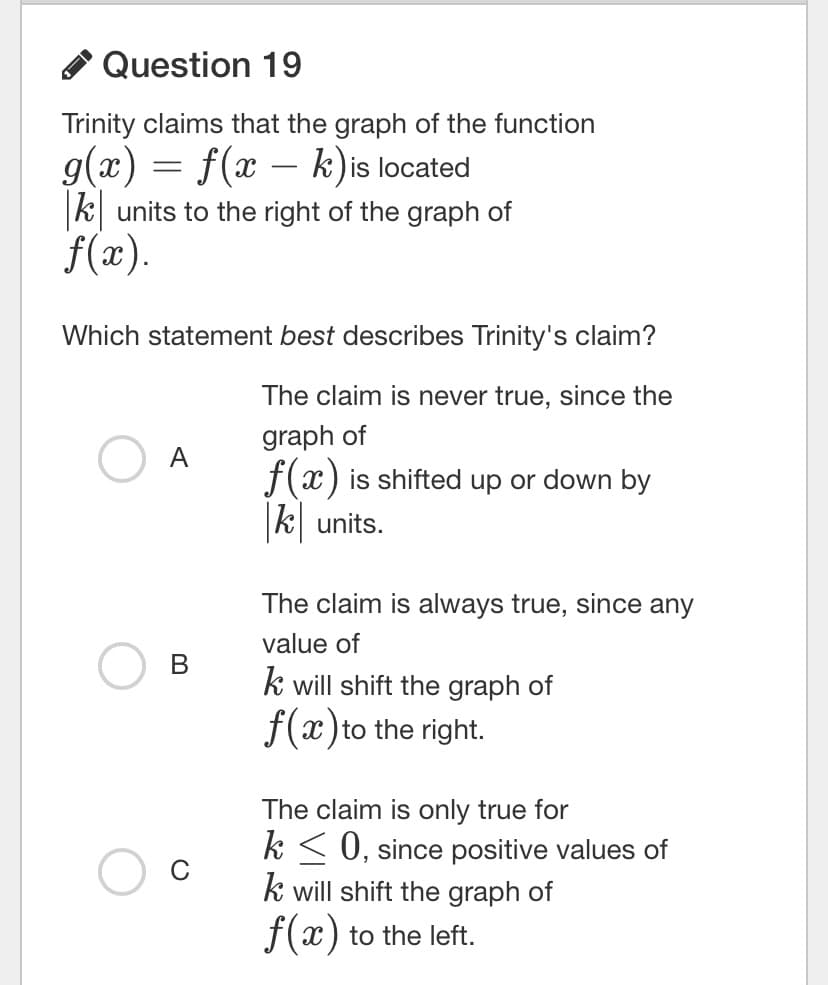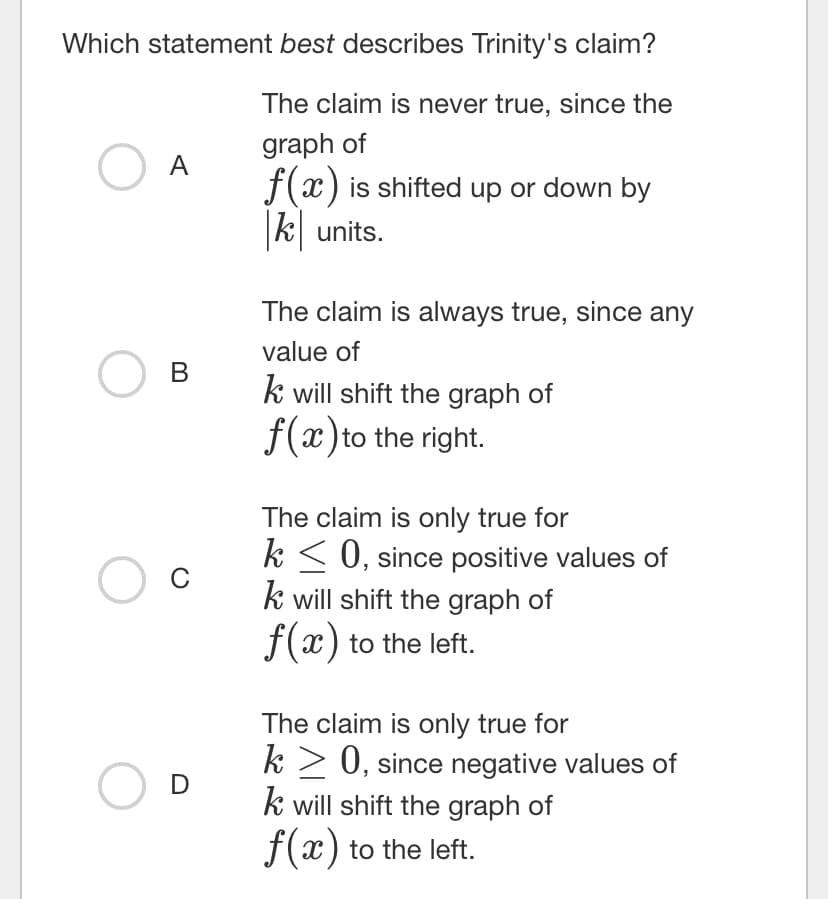Trinity claims that the graph of the function g(x) = f(x – k)is located k units to the right of the graph of f(æ). - Which statement best describes Trinity's claim? The claim is never true, since the graph of O A f(x) is shifted up or down by k units. The claim is always true, since any value of O B k will shift the graph of f(x)to the right. The claim is only true for k < 0, since positive values of k will shift the graph of f(x) to the left.
Trinity claims that the graph of the function g(x) = f(x – k)is located k units to the right of the graph of f(æ). - Which statement best describes Trinity's claim? The claim is never true, since the graph of O A f(x) is shifted up or down by k units. The claim is always true, since any value of O B k will shift the graph of f(x)to the right. The claim is only true for k < 0, since positive values of k will shift the graph of f(x) to the left.
Algebra & Trigonometry with Analytic Geometry
13th Edition
ISBN:9781133382119
Author:Swokowski
Publisher:Swokowski
Chapter5: Inverse, Exponential, And Logarithmic Functions
Section5.1: Inverse Functions
Problem 56E
Related questions
Concept explainers
Equations and Inequations
Equations and inequalities describe the relationship between two mathematical expressions.
Linear Functions
A linear function can just be a constant, or it can be the constant multiplied with the variable like x or y. If the variables are of the form, x2, x1/2 or y2 it is not linear. The exponent over the variables should always be 1.
Question
100%
Solve

Transcribed Image Text:Question 19
Trinity claims that the graph of the function
g(x) = f(x – k) is located
k units to the right of the graph of
f(x).
Which statement best describes Trinity's claim?
The claim is never true, since the
graph of
f(x) is shifted up or down by
k units.
The claim is always true, since any
value of
В
k will shift the graph of
f(x)to the right.
The claim is only true for
k < 0, since positive values of
k will shift the graph of
f(x) to the left.

Transcribed Image Text:Which statement best describes Trinity's claim?
The claim is never true, since the
graph of
f(x) is shifted up or down by
k units.
A
The claim is always true, since any
value of
В
k will shift the graph of
f(x) to the right.
The claim is only true for
k < 0, since positive values of
k will shift the graph of
C
f(x) to the left.
The claim is only true for
k > 0, since negative values of
k will shift the graph of
f(x) to the left.
Expert Solution
This question has been solved!
Explore an expertly crafted, step-by-step solution for a thorough understanding of key concepts.
This is a popular solution!
Trending now
This is a popular solution!
Step by step
Solved in 2 steps with 2 images

Knowledge Booster
Learn more about
Need a deep-dive on the concept behind this application? Look no further. Learn more about this topic, algebra and related others by exploring similar questions and additional content below.Recommended textbooks for you

Algebra & Trigonometry with Analytic Geometry
Algebra
ISBN:
9781133382119
Author:
Swokowski
Publisher:
Cengage

Algebra & Trigonometry with Analytic Geometry
Algebra
ISBN:
9781133382119
Author:
Swokowski
Publisher:
Cengage